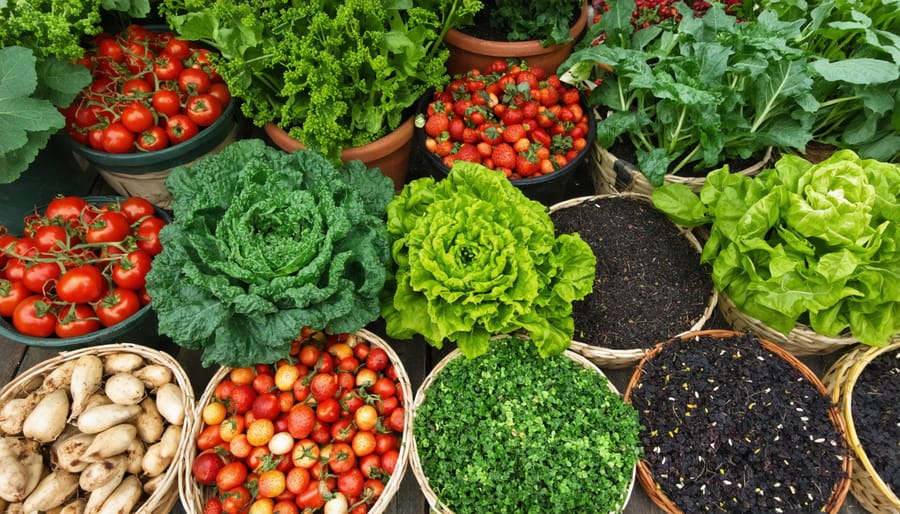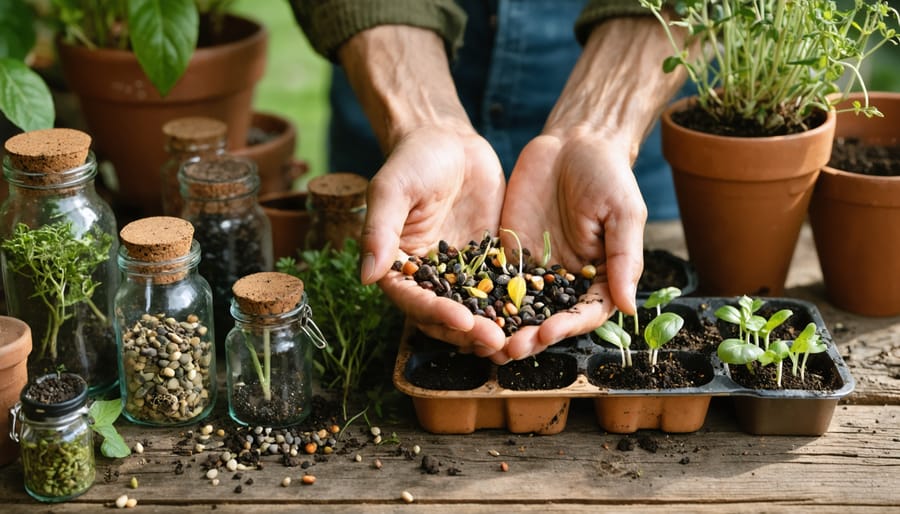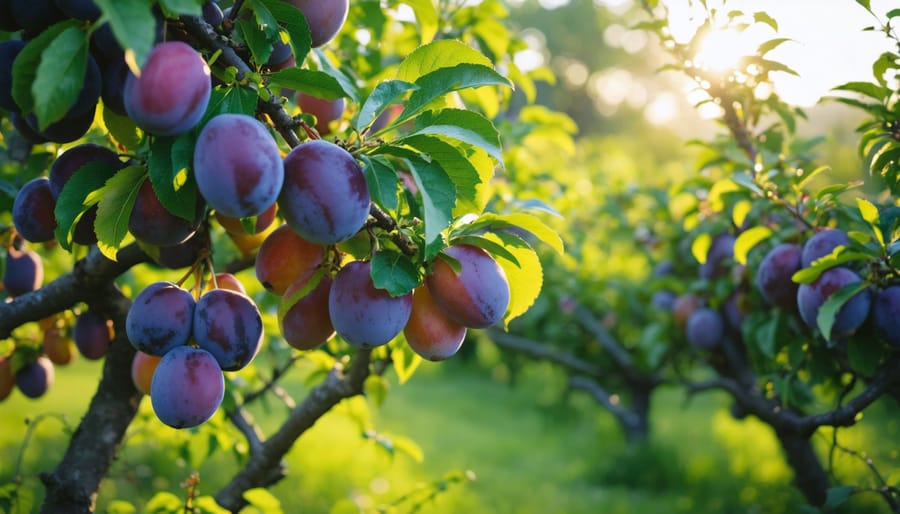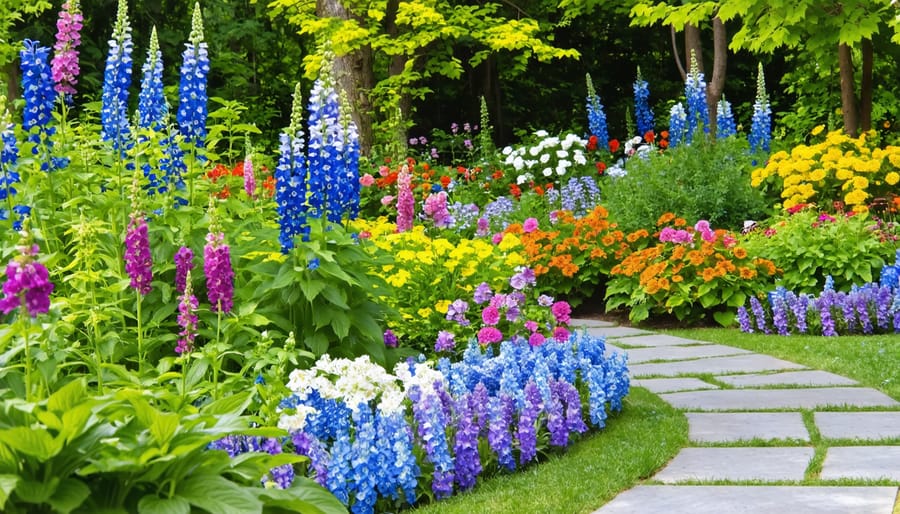Heritage plants connect us to our agricultural past—varieties that survived because gardeners like you saved seeds, shared cuttings, and passed down growing wisdom through generations. These living heirlooms, whether tomatoes your grandmother grew or apple trees planted by 19th-century settlers, represent genetic diversity that modern agriculture desperately needs. Yet thousands of heritage varieties disappear each decade, taking with them unique flavors, climate adaptations, and centuries of resilience.
You hold remarkable power to reverse this loss. Every heritage seed you plant, every cutting you root, every story you share about an heirloom variety strengthens the fragile thread connecting past to future. This isn’t preservation happening in distant seed banks or botanical gardens—it’s happening in backyards, community gardens, and kitchen windowsills where passionate gardeners recognize that saving seeds means saving history.
The beauty of heritage plant preservation lies in its accessibility. You don’t need special equipment, advanced degrees, or acres of land. Start with one treasured variety—perhaps Cherokee Purple tomatoes or Scarlet Runner beans—and learn its story while mastering simple seed-saving techniques. Join the growing community of preservation gardeners who understand that growing food connects us to something larger than ourselves.
This guide will transform you from passive gardener to active guardian, equipping you with knowledge to identify, source, grow, and perpetuate heritage varieties. Together, we’re not just preserving plants—we’re protecting biodiversity, cultural identity, and food security for generations yet to come.
What Makes a Plant ‘Heritage’ (And Why It Matters)

The Stories Behind the Seeds
Every heritage seed tells a story that spans generations. That Cherokee Purple tomato you’re growing? It traveled the Trail of Tears with displaced families who refused to leave their seeds behind. The Mortgage Lifter tomato earned its name when a West Virginia radiator repairman bred it in the 1930s and sold enough plants to pay off his home.
These plants adapted over decades to specific climates and communities. Your grandmother’s green beans thrived in her Kentucky holler because they spent generations adjusting to those exact conditions—the soil composition, rainfall patterns, and growing season length. When families immigrated, their seeds came too, tucked carefully in pockets and suitcases as precious cargo connecting them to homeland.
Heritage varieties preserved regional flavors, cultural celebrations, and family memories. They’re living heirlooms that carry forward the dedication of countless gardeners who saved seeds each season. By growing these plants, you’re not just cultivating vegetables—you’re stewarding stories, honoring traditions, and keeping alive the agricultural wisdom of those who came before us.
Why Heritage Plants Are Vanishing
Our treasured heritage plants are quietly disappearing from gardens and farms across the country, and the reasons behind this loss might surprise you. It’s a story that touches all of us who care about preserving garden diversity for future generations.
The biggest culprit? Modern commercial agriculture has standardized what we grow. Large-scale farms favor just a handful of crop varieties bred for uniform size, long shelf life, and efficient mechanical harvesting—not necessarily for flavor, nutrition, or adaptability to local conditions. When supermarkets stock only a few tomato varieties, thousands of heirloom types fade into obscurity.
Equally heartbreaking is the loss of family seed-saving traditions. For generations, grandparents passed down seeds along with growing wisdom, but busy modern lifestyles have interrupted this beautiful chain. Many of us never learned these skills from our elders, and without someone to preserve them, beloved family varieties simply vanish.
Climate change adds another layer of complexity. Heritage plants evolved over centuries in specific regions, perfectly adapted to local rainfall patterns and temperature ranges. As weather becomes more unpredictable, some heritage varieties struggle in their native habitats, making preservation efforts more urgent.
Garden centers play an unexpected role too. While they’re wonderful resources, most stock primarily modern hybrids and patented cultivars. These newer varieties dominate shelf space because they’re heavily marketed and profitable. When gardeners only see what’s available at the local nursery, heritage plants become invisible, their existence unknown to a new generation of growers.
Understanding these threats is the first step toward becoming part of the solution. The good news? Each of us can make a difference right in our own backyards.
Start Your Own Heritage Plant Collection
Where to Find Authentic Heritage Varieties
Finding authentic heritage varieties is easier than you might think, and the journey of discovery is part of the fun! Let’s explore where you can source these botanical treasures.
**Seed libraries** are wonderful community resources where you can borrow seeds just like library books. You’ll typically find them at local libraries or community centers, and they often carry regionally adapted heritage varieties. The best part? You can return seeds from your harvest to help others grow the same varieties.
**Specialty seed companies** focus exclusively on heirloom and heritage varieties. Companies like Seed Savers Exchange, Baker Creek Heirloom Seeds, and Southern Exposure Seed Exchange have extensive catalogs with detailed histories of each variety. These businesses are passionate about preservation and often include growing tips specific to heritage plants.
**Seed swaps and exchanges** connect you with fellow gardeners in your area. Check community bulletin boards, gardening clubs, or social media groups for upcoming events. These gatherings are goldmines for finding rare local varieties and making friends who share your passion.
**Conservation organizations** like Slow Food’s Ark of Taste and regional heritage fruit tree projects actively work to preserve endangered varieties. Many offer plants, seeds, or scionwood to home gardeners committed to growing them out.
Don’t overlook **local preservation groups and historical societies**—they often maintain collections of plants significant to your region’s agricultural heritage and love sharing them with enthusiastic new stewards.
Choosing the Right Heritage Plants for Your Region
Starting your heritage plant journey begins with understanding what thrives in your specific area. Check your hardiness zone and research which heritage varieties have historically grown well in your region—these plants have already proven their resilience to local conditions.
I always recommend connecting with nearby seed libraries, historical societies, and veteran gardeners who can share stories about local native varieties and regionally important heirlooms. These plants often carry fascinating histories tied to your community and tend to be more forgiving for beginners.
Don’t feel pressured to transform your entire garden overnight! Start with two or three easy-to-grow varieties that excite you. Tomatoes, beans, and lettuce are wonderfully accessible choices for heritage gardening newcomers. As my friend Margaret, a heritage gardener for thirty years, likes to say: “Success with one treasured plant will inspire you more than struggling with ten.”
Keep a simple journal noting what works well in your garden. This personal record becomes invaluable as you expand your collection, helping you make informed decisions and potentially guiding other local gardeners in their preservation efforts.
Documentation: Keeping the Story Alive
Every heritage plant carries a story worth preserving, and documenting these tales is just as important as saving the seeds themselves. Start by creating simple records for each variety—note where you acquired it, the year you planted it, and any special characteristics you observe. Include family connections if the plant came from a relative, or jot down the vendor details if you sourced it from a seed library. These records become precious over time, connecting future generations to the plant’s journey.
Consider keeping a garden journal where you track growing conditions, harvest dates, and flavor profiles. Even smartphone photos with quick captions work beautifully as documentation. The key is consistency, not perfection. When you share seeds with fellow gardeners, pass along these stories too—they transform a simple packet into a living legacy. Many gardeners find that documenting their heritage varieties deepens their connection to the plants and inspires others to join preservation efforts.
Master the Art of Seed Saving
Beginner-Friendly Plants for Seed Saving
Starting your seed-saving journey doesn’t require a green thumb—just a willingness to experiment! Here are four foolproof options that practically save themselves.
**Tomatoes** are wonderfully beginner-friendly. Simply scoop seeds from your favorite ripe tomato, ferment them in water for a few days (this removes the gel coating), then rinse and dry. Those seeds will be ready for next season!
**Beans** make seed saving ridiculously easy. Just let a few pods dry completely on the plant until they rattle, then shell and store. No special treatment needed!
**Lettuce** rewards patient gardeners. Allow a few plants to “bolt” and flower, then watch for fluffy seedheads. Once they turn white and puffy, collect and store the seeds inside.
**Herbs** like basil, cilantro, and dill follow lettuce’s lead—let them flower and go to seed. You’ll have more seeds than you know what to do with!
These edible heritage plants are forgiving teachers, perfect for building your confidence before tackling trickier varieties. Start with just one or two this season, and you’ll soon discover how satisfying it feels to close the loop in your garden.
Basic Seed Saving Techniques
Saving seeds from your heritage plants is easier than you might think! The key is timing—wait until seeds are fully mature before harvesting. For tomatoes and cucumbers, this means letting the fruit ripen completely, even beyond eating stage. For beans and peas, leave pods on the plant until they’re dry and brittle.
Once you’ve collected your seeds, cleaning comes next. Dry seeds like beans simply need their pods removed. Wet seeds from tomatoes or cucumbers require a brief fermentation process: scoop seeds into a jar with a bit of water, let sit for 2-3 days (stirring daily), then rinse away the pulp. This actually mimics nature and can improve germination!
Drying is crucial for long-term storage. Spread clean seeds on paper plates or coffee filters in a warm, airy spot away from direct sunlight. They’re ready when they snap rather than bend—usually within a week or two.
Before storing, do a quick viability test. Place ten seeds on a damp paper towel, fold it up, and keep it moist in a plastic bag for a week. If seven or more sprout, you’ve got great seeds! Store your dried seeds in paper envelopes or small jars in a cool, dark place. Label everything with the variety name and date—trust me, you’ll forget otherwise! With these simple techniques, you’re not just gardening; you’re becoming a guardian of living history.

Storing Seeds for Long-Term Preservation
Proper storage is the secret to keeping your heritage seeds viable for years to come! Think of it as creating a cozy hibernation spot where your seeds can rest safely until planting season arrives.
Start with the right containers—glass jars with tight-fitting lids or small paper envelopes work beautifully. I love using old spice jars because they’re perfectly sized and seal tightly. Just make sure everything is bone-dry before sealing, as moisture is your seeds’ worst enemy.
Temperature and humidity are crucial. Your seeds will stay happiest in cool, dark, and dry conditions. A consistent temperature between 32-41°F is ideal, making your refrigerator an excellent storage spot. If you’re storing seeds there, tuck them in an airtight container with a silica gel packet to absorb any lingering moisture.
Now, here’s where many gardeners stumble—labeling! Trust me, you’ll forget which envelope holds those precious Cherokee Purple tomatoes. Label each container with the variety name, harvest date, and any special notes about the parent plant. I also include germination rates if I’ve tested them.
Finally, keep a simple garden journal tracking your seed inventory. It’s deeply satisfying watching your collection grow while knowing you’re safeguarding these botanical treasures for future generations!
Growing Heritage Plants Successfully
Growing heritage plants is like tending a living piece of history, and while these time-tested varieties are often remarkably resilient, they do have some unique preferences compared to their modern counterparts. Understanding these differences will help you unlock their full potential in your garden.
**Start with the Soil They Remember**
Heritage plants evolved in a world without synthetic fertilizers, so they’re often more sensitive to soil conditions. Most prefer rich, well-amended soil with plenty of organic matter. Before planting, work in aged compost or well-rotted manure—think of it as reconnecting these plants with the environment their ancestors thrived in. Many heritage varieties have deeper root systems than modern hybrids, so loosening soil to at least 12 inches deep gives them the room they need to establish strongly.
**Embrace Companion Planting Wisdom**
Our gardening ancestors knew something modern science is rediscovering: plants grow better together. Heritage varieties particularly benefit from traditional companion planting. Try growing heritage tomatoes with basil to improve flavor and deter pests, or plant pole beans alongside corn and squash in the classic “Three Sisters” method. These partnerships aren’t just folklore—they create mutually beneficial relationships that reduce pest pressure naturally.
**Natural Pest Management That Works**
Heritage plants often have built-in resistance to local pests, but they may need help adjusting to your specific garden conditions. Encourage beneficial insects by planting flowers like marigolds, nasturtiums, and yarrow nearby. Hand-picking pests in the early morning, when they’re sluggish, works remarkably well. For persistent problems, try companion plants with strong scents—garlic and onions can deter many common pests without any spraying.
Remember that heritage varieties may grow differently than you expect, with varied maturation times and growing habits. Following a season-by-season care approach helps you stay attuned to their natural rhythms, ensuring these precious varieties flourish under your stewardship.
Join the Preservation Movement
Connect With Other Heritage Gardeners
You don’t have to preserve heritage varieties alone—connecting with fellow gardeners makes the journey more rewarding and successful. Start by searching for local seed swaps in your community, often hosted by libraries, garden clubs, or community centers. These gatherings are treasure troves where you can exchange seeds, share growing tips, and discover varieties that thrive in your specific climate.
Online communities offer endless support and knowledge. Join Facebook groups dedicated to seed saving, follow heritage gardening forums, or participate in virtual seed exchanges. Many experienced growers are generous with their expertise and happy to answer questions about everything from native perennials to heirloom tomatoes.
Consider connecting with preservation organizations like Seed Savers Exchange or your regional seed library. These groups maintain extensive collections and often provide mentorship programs pairing beginners with experienced seed savers.
I’ve found that my most successful growing seasons happened after chatting with a neighbor who’d been saving beans for thirty years. Don’t underestimate the value of local knowledge—seek out experienced gardeners at farmers’ markets or through your local extension office. They’re usually thrilled to share their passion and might even offer starter seeds from their personal collections.

Becoming a Seed Steward
Ready to take your heritage preservation efforts to the next level? Becoming a seed steward is a rewarding way to directly protect endangered varieties from disappearing forever. Seed stewardship programs connect passionate gardeners like you with specific rare varieties that need caretakers. Organizations such as Seed Savers Exchange and regional seed libraries often have formal adoption programs where you’ll commit to growing out a particular variety each season, maintaining its purity, and saving seeds for the community.
The process is simpler than you might think! Start by reaching out to seed stewardship networks in your area or joining national programs. They’ll match you with varieties suited to your climate and gardening experience. You’ll receive seeds, growing guidelines, and support from fellow stewards. Your role involves growing the plants, documenting their characteristics, and harvesting seeds to share back with the program’s seed bank.
Contributing to conservation seed banks ensures these precious varieties remain available for future generations. Many programs welcome donations of well-documented, properly stored seeds from home gardeners. You’re not just growing vegetables—you’re writing the next chapter in a living history book that spans generations.
You don’t need to transform your entire garden overnight to become a preservation hero. Every single heritage variety you choose to grow contributes to safeguarding our agricultural legacy for future generations. There’s something deeply rewarding about nurturing a tomato that your great-grandmother might have grown, or discovering the incredible flavor of a pepper variety that nearly disappeared from cultivation.
The beauty of heritage preservation is that it starts small. Choose just one variety this season—perhaps a colorful heirloom tomato or a fragrant herb with an interesting story. Plant it, tend it with care, and save some seeds at the end of the season. Share your experience with fellow gardeners, swap seeds with neighbors, and watch as your small action ripples outward.
This growing season, you have the opportunity to be more than a gardener—you can be a guardian of living history. Your garden becomes a sanctuary where rare varieties thrive and genetic diversity flourishes. So grab your trowel, select that special heritage variety, and begin your preservation journey today. The plants are waiting, and the rewards are immeasurable.




